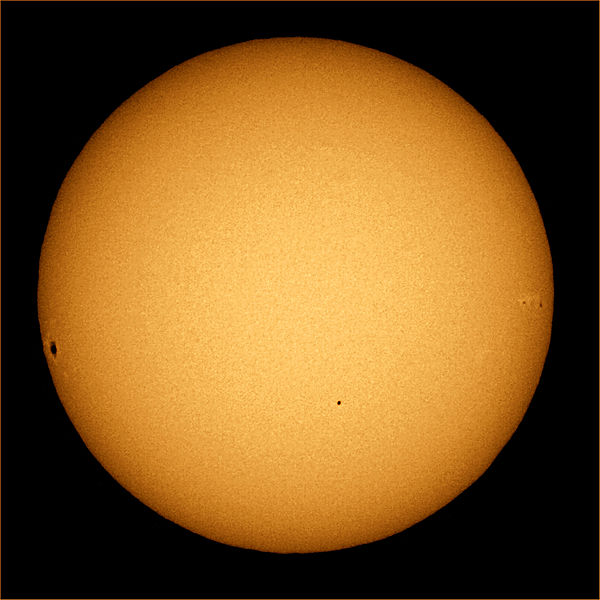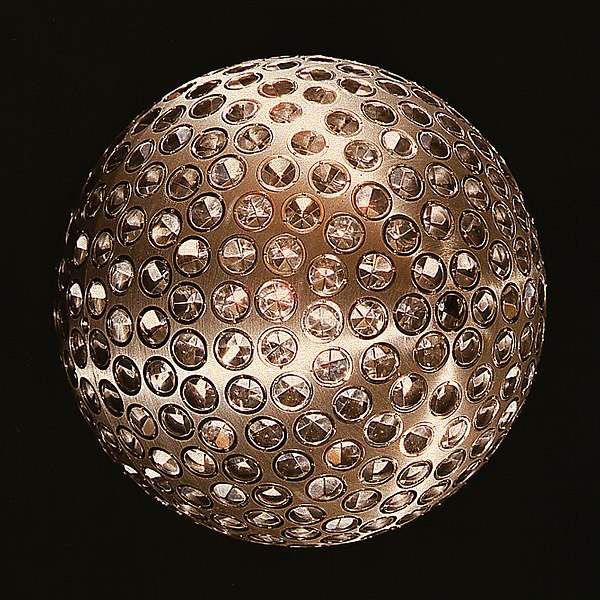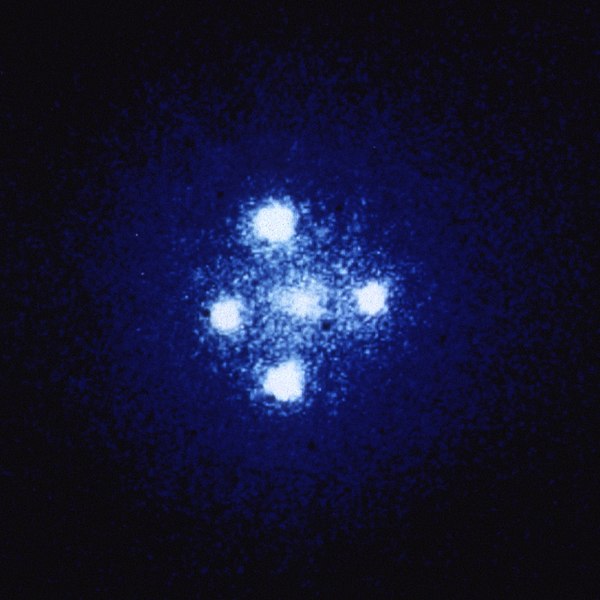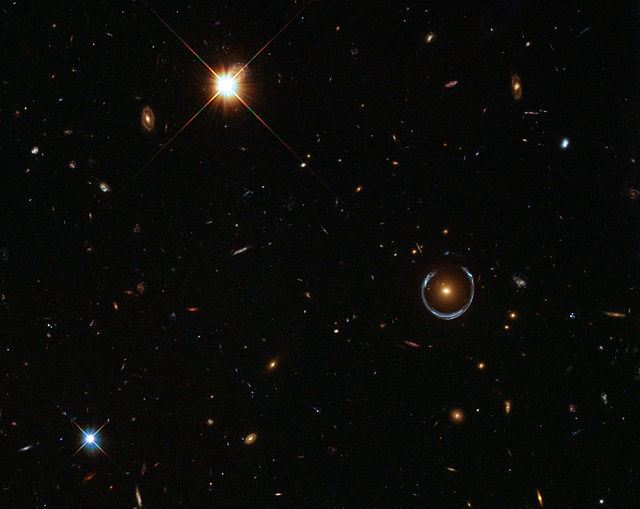Tests of general relativity
Tests of general relativity serve to establish observational evidence for the theory of general relativity. The first three tests, proposed by Albert Einstein in 1915, concerned the "anomalous" precession of the perihelion of Mercury, the bending of light in gravitational fields, and the gravitational redshift. The precession of Mercury was already known; experiments showing light bending in accordance with the predictions of general relativity were performed in 1919, with increasingly precise measurements made in subsequent tests; and scientists claimed to have measured the gravitational redshift in 1925, although measurements sensitive enough to actually confirm the theory were not made until 1954. A more accurate program starting in 1959 tested general relativity in the weak gravitational field limit, severely limiting possible deviations from the theory.
Transit of Mercury on November 8, 2006 with sunspots #921, 922, and 923
One of Eddington's photographs of the 1919 solar eclipse experiment, presented in his 1920 paper announcing its success
The LAGEOS-1 satellite. (D=60 cm)
A bright ring of material surrounding a dark center that marks the shadow of the M87's supermassive black hole. The image also provided a key confirmation of General relativity.
General relativity, also known as the general theory of relativity and Einstein's theory of gravity, is the geometric theory of gravitation published by Albert Einstein in 1915 and is the current description of gravitation in modern physics. General relativity generalizes special relativity and refines Newton's law of universal gravitation, providing a unified description of gravity as a geometric property of space and time or four-dimensional spacetime. In particular, the curvature of spacetime is directly related to the energy and momentum of whatever matter and radiation are present. The relation is specified by the Einstein field equations, a system of second order partial differential equations.
Einstein cross: four images of the same astronomical object, produced by a gravitational lens
Artist's impression of the space-borne gravitational wave detector LISA
This blue horseshoe is a distant galaxy that has been magnified and warped into a nearly complete ring by the strong gravitational pull of the massive foreground luminous red galaxy.
Projection of a Calabi–Yau manifold, one of the ways of compactifying the extra dimensions posited by string theory








